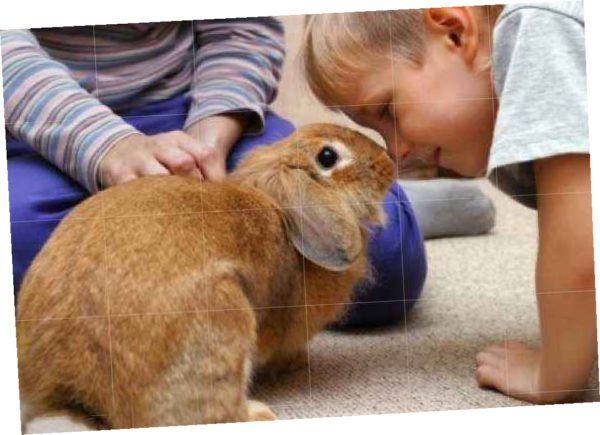Animals use sounds as a tool to transmit information.
Indice
In addition, these sounds can be vowel sounds (those produced by the respiratory system) or mechanical sounds (those produced by the contact of body parts with each other or with some element of nature).
There are many animal sounds that exist.
And we are sure that many of them you would recognize and know what to call them, but maybe not others. Let’s turn them on!
Animal sounds: pets and farm animals
Pets or farm animals
- The Donkey ornea, brays or rozna.
Their voice is called braying or roaring. - The Horse neighs or snorts
The sound is called neighing or snorting. - The bullet goat.
It bleats. - The Pig squeals, grunts, grunts, squeals or squeals.
Its voice is called a growl, squeak or grunt. - The rabbit and the hare squeak or tap dance
The sound is called squeaking or stomping. - The rooster sings or clucks, the hen also clucks or clucks, and the chicken is a cockerel, a cockerel, a cockerel, a cockerel, a cockerel or a cockerel. What you make sounds of these animals are called: clucking, singing, clucking or chirping.
- Goose squawks or clucks.
It squawks or clucks. - The Cat meows, maya or marramiza, but it also snorts or purrs.
Their voice is known as a meow, mewl, whine, snort or purr. This one was easy 😉 - The bullet sheep, balita or balitea.
Its sound is called bleating, like that of the goat. - The Dog barks, whines, beats, growls or howls.
Its voice is called bark, whine, whine, beat, growl and howl or yelp. And this one too 😉 - The Rat and the mouse squeak.
They emit shrieks. - The bull, the cow and the ox “bellow”, but the bull not only bellows but also snorts. The cow mooing, remudia or bellowing. The ox also bellows, as does the calf.
The sounds are called mooing, bellowing or bellowing. - Although they are found almost everywhere, not just on farms or as intruders in our homes, the fly and the mosquito: they buzz.
Have you ever wondered what the sounds of pets and farm animals are called?
Have you ever heard a cat meow or a dog bark and wondered if there is a specific word to describe those sounds?
Well, in this article we will explore the fascinating world of animal sounds and their unique names.
From the soft purr of a cat to the mighty roar of a lion, we will delve into the vocabulary of animal sounds and discover the fascinating ways they communicate.
So dive in and explore the wonderful world of animal sounds.
Domestic pets
Having a pet can bring joy and companionship to our lives. Among the most common domestic animals are cats and dogs.
Cats are known for their purring and meowing, which they use to communicate with their owners. From a soft purr when petted to an insistent meow for food, cats express themselves in unique ways.
Similarly, dogs are known to bark, which can range from a low whine to a loud, insistent sound.
They use their barking to communicate various emotions, such as excitement, fear or warning. In addition, dogs can also howl, a distinctive sound that can be heard from far away.
Other animals also have their own peculiar vocalizations.
Birds, for example, are known for their singing and whistling. Birds such as canaries, goldfinches and nightingales produce beautiful melodies.
These sounds can have different purposes, such as attracting mates or protecting their territory.
Similarly, small furry animals such as rabbits and guinea pigs may emit soft squeaks when they are happy.
These cute sounds only add to the charm of these little animals.
In addition to vocalizations, domestic pets can also communicate through body language.
A wagging tail in dogs indicates joy and excitement, while an arched back and hissing in cats indicates fear or aggression.
Understanding these signs can help pet owners better understand their pets’ needs and emotions. It is amazing to see how animals use vocalizations and body language to express themselves and interact with us.
In conclusion, domestic pets have their own special sounds and forms of communication.
From the barking of dogs to the purring of cats and the melodious songs of birds, these sounds add joy to pet ownership.
Understanding and appreciating the sounds our pets make can strengthen the bond we have with them and enhance the pet ownership experience.
So the next time you hear your dogs bark or your cat purr, take a moment to appreciate the unique sounds of our beloved domestic pets.
Cats
Cats are known for their mysterious and independent nature, and possess a wide variety of vocalizations to communicate with their owners and other felines.
From the comforting purr to the menacing hiss, cats have a language all their own.
One of the most distinctive sounds cats make is the “cat purr,” a soothing noise associated with contentment and relaxation. This sound is often heard when they are petted or cuddled.
Other vocal sounds cats use include meows, growls and yowls to express their feelings and needs.
Cats can also express themselves through various chirps and trills when they are feeling playful.
In addition to the numerous vocalizations they employ, cats also use their body language to communicate.
From their tails to their whiskers, cats use a variety of signals to express their emotions.
An upright, relaxed tail usually indicates a happy, friendly cat, while a fluffed tail may indicate fear or aggression.
Cats can also use their ears to communicate; when they are erect and relaxed, they are usually happy and interested, but when they are pinned to their head, it can signify fear or hostility.
Whiskers also play a role in communication: relaxed and pointing forward may indicate tranquility, while pointing backward may imply that the cat feels threatened.
Understanding these different forms of communication can help pet owners decipher their feline’s needs and emotions.
Cats have an amazing ability to express themselves through a variety of vocalizations and body language.
By listening to their meows, growls and purrs, and paying attention to their tails, ears and whiskers, owners can gain valuable insight into their cats’ feelings and needs.
By understanding their language, owners can provide better care and attention to their felines.
Dogs
Dogs possess a variety of vocalizations with which they communicate with humans and other canines.
From joyful barks to menacing growls, they have a unique way of expressing their thoughts and feelings.
Not only do they bark, but they also cry, howl and whimper when in danger or pain.
By understanding the various sounds dogs make, we can interact more effectively and take better care of our beloved pets.
As for barking, dogs have a wide range of tones and registers. Some canines have a deep, resonant bark, while others have a high-pitched squeak.
A puppy’s barking can have different implications depending on the context.
For example, a high-pitched bark may imply excitement or alertness, while a long, steady bark may indicate aggression or fear.
In addition, they also use other sounds, such as moans and howls, to express their emotions.
Groaning often signals a desire for attention or a sign of discomfort, while howling may be a way of communicating over long distances or in response to certain sounds.
Along with vocalizations, dogs also communicate through body language. Using their tails, ears and facial expressions, they can convey their feelings and intentions.
For example, a wagging tail usually implies joy, while a tucked tail can mean fear or submission.
Their ears also play a role in communication. Erect ears often reflect alertness or curiosity, while flattened ears may be associated with fear or aggression.
By tuning in to both their body language and their sounds, we can better understand our furry friends and cultivate a stronger relationship with them.
Farm animals
Exploring the captivating world of farm animals allows us to discover the unique ways in which each creature communicates through sound.
From the sweet trills of birds to the deep bellows of mammals, these animals use their vocalizations to express a multitude of emotions and messages.
For example, the gentle bleating of sheep echoes across the fields, while the thunderous mooing of cows can be heard in the distance.
Thus, sound in the realm of farm animals is not simply noise, but a language that conveys their wishes, warnings and even their contentment.
By understanding these sounds, we can connect with these animals on a deeper level and marvel at the diversity of communication in the animal kingdom.
Farm animals encompass a wide variety of species, all of which are equipped with distinctive sets of vocalizations.
Among the birds that live on farms, the joyful songs of the roosters, the roosters and the enchanting trills of canaries fill the air with captivating melodies.
In addition, the snorting and grunting of the pigs add a touch of fun to the rural landscape. As for mammals, horses neigh and whinny, while goats bleat and cows moo.
Through these sounds, they express their needs, whether it is a call for food, a sign of distress or simply a way to show their presence within the herd.
Thus, sound in the world of farm animals is a crucial element in their daily interactions and serves as a constant reminder of their existence.
Amidst the harmony of farm animal vocalizations, it is important to remember that each species has its own individual set of vocalizations.
For example, the rhythmic clucking of chickens can be heard in the distance, while the gentle cooing of pigeons creates a serene atmosphere.
On the other hand, the braying of donkeys and the bleating of lambs add a touch of personality to the rural landscape. These sounds are not only a form of communication, but also offer an insight into the world of farm animals.
By observing their vocalizations, we can obtain information about their behaviors, needs and feelings.
Thus, sound in the realm of farm animals is a powerful tool that unites us with these creatures and deepens our understanding of their lives.
Birds
The vibrant melodies of birds are a captivating part of nature.
From the sweet melodies of the canaries and nightingales to the nightingales to the powerful cries of eagles and hawks, the voices of birds can be heard in many environments.
Each species of bird has its own distinctive sound, which allows them to identify and attract mates, mark their territory and signal potential dangers.
Some birds, such as the skylark, are known for their beautiful song, while others, such as the
owl
have unique calls that can sound eerie or mysterious.
The trills of a canary or the neighing of a horse add a captivating element to the world around us.
Birds are also essential for farm animals.
They provide eggs, meat and feathers, and their songs often accompany rural landscapes. From the clucking of chickens to the cawing of crows, farm birds have a wide range of vocalizations.
Some, like the crane, have a characteristic trumpeting sound, while others, like the partridge, have a soft, gentle cooing.
Birds are not only practical sources of food and products, but also contribute to the atmosphere of a farm.
In addition to their vocalizations, birds also communicate through body language and behavior.
They use various movements, such as flapping their wings, ruffling their feathers or jumping from branch to branch, to express themselves to each other.
For example, a male bird may perform a courtship dance to attract a mate, while a flock of birds may fly in a synchronized pattern to signal safety or warn of danger.
Birds are truly amazing creatures, and their sounds and behaviors bring life and richness to the world around us.
Mammals
Mammals, a multifaceted variety of creatures, are important contributors to the world of sound.
From the majestic roar of a lion to the gentle bleating of a sheep, these animals generate a wide range of vocalizations.
These vocalizations have many functions, such as communication, mating rituals and territory defense.
For example, male deer employ a series of low grunts to attract females during mating season.
Similarly, dolphins rely on a complex system of clicks and whistles to converse with each other underwater.
Through the evolution of unique vocalizations, mammals can interact with their environment and with other animals.
Amphibians
The amphibian kingdom is full of intriguing methods of communication.
From the thunderous croaks of frogs and frogs to the melodic trills of tree frogs, the vocabulary of these creatures is as diverse as their appearances.
Croaks, trills, buzzes and whistles are just some of the vocalizations that make up their rich vocabulary.
These sounds play an important role in the survival and reproduction of amphibians, highlighting their unique ability to communicate.
Frogs are known for their deep croaks, which they use to attract mates during the mating season.
Male frogs also use these vocalizations as a way of marking their territories, letting other males know they are in the area.
To make their croak calls even more audible, some species have vocal sacs that inflate and amplify their sounds.
Tree frogs, in particular, have a distinctive repertoire of vocalizations.
From whistling to humming, they use vibrating membranes in their throats or specialized body parts to create a melodious chorus.
These sounds are used to attract females and announce the presence of a male to other amphibians.
The amazing variety of vocalizations amphibians possess demonstrates their incredible ability to communicate.
Rodents
Rodents, belonging to the order Rodentia, are small mammals with sharp incisors and the ability to chew various materials.
They are found everywhere, from forests to deserts to cities, and play an important role in the ecosystem as seed and prey dispersers.
Let’s explore some interesting facts about rodents and the communication methods they use.
Rodents communicate through vocalizations, such as squeaks, chirps, grunts and growls.
These sounds can be used to alert others to danger or to express dominance.
The guinea pigs are also known for their special purr that often indicates contentment.
In addition, rodents can use non-vocal sounds, such as teeth clicking and tail tinkling, to interact with others of their species.
Rodents can also communicate through body movements and gestures.
They may wiggle their whiskers, wag their tails or release pheromones to indicate their presence.
These methods allow them to establish social hierarchies and avoid conflicts. The complex combination of vocalizations, non-vocal sounds and body language shows the adaptability and sophistication of these creatures.
In conclusion, rodents have an impressive repertoire of sounds, movements and behaviors to communicate with each other.
These signals, which include vocalizations, non-vocal sounds and body language, allow them to communicate effectively and use their various body parts to express themselves.
Long distance animal communication
Exploring long-distance animal communication is a fascinating task, revealing the phenomenal methods of communication used by the animal kingdom.
An example of this is the elephant which uses infrasound to converse with other members of its herd, even from miles away.
Infrasound refers to sound waves that are below the range of human hearing.
Elephants generate these low-frequency rumblings, which can be transmitted through the ground for miles, allowing them to maintain contact with their herd.
This form of dialogue is essential to carry out activities such as identifying food or warning of potential hazards.
In addition, whales also rely on long-distance communication, emitting a variety of vocalizations known as songs, which can travel great distances across the ocean.
This serves purposes such as attracting potential mates or conversing with other whales in their pod.
Gaining an understanding of long-distance animal communication offers a multitude of advantages.
It allows us to recognize the intricate ways in which animals interact and communicate with each other.
By studying the techniques and signals used by animals to communicate over long distances, scientists can gain a better understanding of their behaviors and social structures.
This information can also be used for practical applications, such as conservation efforts.
For example, by investigating the communication patterns of endangered species, specialists can develop strategies to protect their habitats and ensure their survival.
Long-distance animal communication is a topic that continues to reveal the enigmas of the animal kingdom, showing the impressive methods animals use to communicate with each other.
Elephants
Elephants are extraordinary animals that can be found in various regions around the world.
Their size and gentle nature have attracted the attention of humans for centuries.
One of the most amazing characteristics of elephants is their ability to communicate through infrasound, a form of sound undetectable by human ears.
This low-frequency communication allows them to exchange information over long distances, even in dense forests and open savannahs.
It is truly amazing how these intelligent creatures can transmit messages and share data with their herd using such unusual vocalizations.
Whether to alert others to potential dangers or to organize group movements, elephants have developed a highly sophisticated language that is unique to their species.
Another impressive characteristic of elephants is their deep understanding of empathy and social bonds.
They are known to express a wide range of emotions, from joy and enthusiasm to pain and distress. Their vocalizations, such as trumpeting and roaring, are used as a way to show their feelings and maintain their collective bonds.
These vocalizations are often accompanied by physical displays, such as ear flicking and trunk movement, further intensifying their communication.
It is impressive to watch these majestic creatures as they interact and communicate with each other, creating strong family and community bonds.
As we continue to study and understand the complexities of elephant communication, we gain a greater appreciation for the subtleties and beauty of the animal world in these areas.
Whales
The majestic creatures of the sea, the whales, have developed a remarkable way of expressing themselves.
From evocative melodies, which can be heard from miles away, to clicks and whistles, these creatures communicate through a variety of sounds.
These sounds not only allow whales to socialize and interact, but also play a key role in their behavior and interactions.
Uncovering the mysteries of these magnificent creatures and understanding their communication is essential to understanding their behavior.
Deep in the ocean, whales have come to rely on their vocalizations for a variety of purposes; from navigation and prey location, to communication within their group.
The best known of these vocalizations are the captivating songs that males bleat to attract females or assert dominance.
Each species has its own distinctive song, which may evolve over time. In addition, it is known that whales also use their songs for echolocation, similar to how dolphins use their dolphins use clicks to identify their environment.
In addition to their melodic songs, whales also produce a variety of other sounds.
Clicks are often used to locate prey, as the sound waves reflect off objects in the water, providing the whales with information about their surroundings.
Whistles, on the other hand, are often used for social interactions, to signal distress or simply to maintain contact with other group members.
The complexity and diversity of these sounds demonstrate the intelligence and sophistication of these remarkable creatures.
In conclusion, exploring the sounds of pets and farm animals has given us a deeper understanding of the fascinating world of animal communication.
From the distinctive purrs of cats to the energetic barks of dogs, domestic pets have their own unique ways of expressing themselves.
On the other hand, farm animals such as birds, mammals, amphibians and rodents have their own repertoire of sounds that serve various purposes.
In addition, we delve into the world of long-distance animal communication, where elephants and whales demonstrate their amazing ability to communicate over vast distances.
Understanding animal sounds not only enhances our knowledge, but also deepens our appreciation for the diverse life forms that share our planet.
So the next time you hear a bird singing or a cow mooing, take a moment to marvel at the rich variety of sounds that surround us.









